If this is the first post from this Substack you’re encountering . . . Welcome! There’s no need to read what came before, but if you’re interested, here’s an introduction, and the posts on books from 1984–1993, 1994–2003, and 2004–2013.
Final entry—let’s finish this!
2014: Four Cold Chapters on the Possibility of Literature: Leading Mostly to Borges and the Oulipo by Pablo Martín Ruiz
Another book I want to reread! (And write more about here.) This is another Scholarly Series book—and one that truly bends the conception of what a “scholarly book” is.
The Scholarly Series started with two interrelated impulses: the desire to produce critical texts that were about the “right” authors and weren’t boring, basically free of charge. A lot of university press publishing relies on subventions, although I don’t know if there are many quite as forthright about it as Dalkey Archive’s.
If a manuscript is chosen for publication, the necessary level of subvention, including a detailed breakdown of all costs involved in bringing the book into print, is itemized and reviewed with the author. These costs include such items as copyediting, layout and design, production, and promotion. Typically the Press covers over half of these costs while the author secures funding for the remaining portion. The standard contract offers the author royalties of 6% on net sales of the book, 10 author copies, and a 40% discount on additional units.
If you know anything about publishing—or even if you’ve just read this series—you know that costs are squishy and everyone’s a grifter. There is many a way to pad a book budget, so for many of these books, the subvention covered all the actual costs, allowing sales revenue to be almost pure profit, helping to underwrite the rest of the ventures.
This isn’t necessarily a bad thing—I’ve seen, and see, much more egregious schemes—especially since the books for the series really were selected for editorial reasons. This wasn’t really a pay-to-play scenario. (And some Scholarly books received no subvention.) And, it’s worth noting, that as cool as a more academic book might sound—and Four Cold Chapters on the Possibility of Literature: Leading Mostly to Borges and the Oulipo, is undeniably cool sounding, which is totally backed up in the text itself—sales are modest. By which I mean, like 100-300 total units.
This is why most of the books were done with a small hardcover run (50-100 units) that sold to academic libraries at $70 a clip, along with a 250-300 paperback copy run for devotees of the subject. Which, to math it out, would generate around $3,500 after bookstore/library discounts and distributor fees.
The Dalkey Archive book that, to date, has sold the fewest copies falls into this camp: Aidan Higgins: The Fragility of Form, which has pieces from Annie Proulx, John Banville, Dermot Healy, and more, about one of the great Irish writers of the past century, and has sold 20 copies. (Expect an excerpt of this if/when I start to build out the “for paid subscribers” aspect of this Substack—which I am loathe to do, but would provide archival supplements to these things I write.)
Anyway, Four Cold Chapters opens with an epigraph from Macedonio Fernádez’s Museum of Eterna’s Novel: The First Good Novel (published by us at Open Letter), then Chapter 1 kicks off with a section called “false start” that’s in Spanish. The book then winds its way through all the names: Poe, Perec, Queneau, Borges, etc., in a true intellectual romp looking at the ways in which books are written and come to be written. It’s like an academic version of Rodrigo Fresán’s The Invented Part.
Total Titles Published in 2004: 43
Countries Represented: 19
Translations Published: 32
Other Notable Titles from 2014: Suicide by Edouard Léve, Literature Express by Lasha Bugadze, Writers by Antoine Volodine
2015: Kvachi by Mikheil Javakhsihvili, translated from the Georgian by Donald Rayfield
A few times over the course of this series, I’ve mentioned the various schemes that John relied on in order to publish so much literature in translation. If you’ve been paying attention to the numbers at the bottom of these entries, you’ll have noticed just how many books in translation Dalkey Archive brought out over its history—but especially over the last twenty years.
According to the Translation Database (which is a bit dusty and unreliable post-2020, but will be coming back in all its glory in 2025), the only press to publish more translations from 2008 onward is AmazonCrossing. They did 463 compared to Dalkey Archive’s 351. But, to be honest, that a) doesn’t seem like a fair fight, given the disparity in resources, but also b) AmazonCrossing pulls from many more genres, so the editorial vision can be a bit more hazy. One could argue it’s kind of apples and oranges and that Dalkey Archive is THE premiere publisher of international literature, thanks to everyone who worked there before the press was gifted to Deep Vellum.
Just to build more context, over this same period, Europa Editions did 243 titles (108 fewer than Dalkey Archive), New Directions 227, FSG 176, Archipelago 148, Open Letter 133, and Deep Vellum 89.
And unlike most of these other presses, Dalkey was willing to do books from “unpopular” countries. It’s one thing to do translations from France, Spain, Korea, Argentina, or, to do a book or two from a more “exotic” location; it’s another to do a series of books from countries like Estonia and Georgia that, from a marketing perspective, don’t come off as “sexy.”
And yet.
Between the years of 2008 and 2015, when Dalkey Archive’s series went on a hiatus, a grand total of 9 works from Georgia came out in English translation in the U.S. Dalkey published 8 of those. (Plus Dagny, or a Love Feast by Zurab Karumidze, which the author wrote in English.) Since that time 6 books from Georgia have come out, including Eighth Life and My Soul Twin by Nino Haratischvili (Scribe) and Sacred Darkness by Levan Berdzenishvili (Europa), despite which, Dalkey Archive has still published 53% of the Georgian books from 2008–2020.
Of the 9 titles in the Georgian Literature Series Dalkey Archive has published (full list available here), Kvachi is one of the frontrunners to become an Essential, and definitely the one most appropriate to this series of posts:
This is, in brief, the story of a swindler, a Georgian Felix Krull, or perhaps a cynical Don Quixote, named Kvachi Kvachantiradze: womanizer, cheat, perpetrator of insurance fraud, bank-robber, associate of Rasputin, filmmaker, revolutionary, and pimp. Though originally denounced as pornographic, Kvachi's tale is one of the great classics of twentieth-century Georgian literature—and a hilarious romp to boot.
Love me some Ostap Bender-esque swindlers!
Total Titles Published in 2015: 48
Countries Represented: 18
Translations Published: 29
Other Notable Titles from 2015: The Sea by Blai Bonet, The Key by Máirtín O Cadhain, 21 Days of a Neurasthenic by Octave Mirbeau
2016: I Saw Her That Night by Drago Jančar, translated from the Slovenian by Michael Biggins
Slovenia is another country in which Dalkey Archive has an outsized showing, having published 13 of the 28 works of Slovenian fiction that came out from 2008–2020, including four books by Drago Jančar.
I first came across Jančar thanks to the wonderfully curated “Writings from an Unbound Europe” series at Northwestern University Press, which did three of his books, including Mocking Desire, which is the one I foisted on John—and which presumably got him interested in Jančar.
This work of Jančar’s is what I suspect a lot of people think of when they think of “European Literature”: rather serious, polyvocal, about World War II. But there’s an energy in Jančar’s writing that elevates his work and brings to mind the Serbian writer David Albahari. Compared to some of the other Eastern European authors I’ve referenced (like Gert Jonke, or Jiří Gruša) Jančar is less experimental, more classic—a literary style that might surprise some Dalkey Archive fans.
But one thing John always emphasized is that although people think they know what makes a “Dalkey Book”—usually something along the lines of “big,” and “dark,” and “challenging,” and “unreadable”—what actually makes a Dalkey book is the fact that Dalkey published it. For many many years, he only wanted to do books that he loved, and this love could take a lot of different forms. Sure, some of the books are totally bonkers, others as darkly funny as you can imagine, still others obsessed with the construction of character, or voice, or with the idea of writing a novel about trying to write a novel. From one perspective there’s not a ton of range to be found in the Dalkey Archive catalog (compared to the aforementioned AmazonCrossing, whose list includes romance, thrillers, zombie books, and Bae Suah), but below the surface, there are a lot of different books that various editors loved for different reasons.
The real reason I’m including this book here on this list though is simply to relate the anecdote that this was the final book that John was able to edit himself. He told me his eyes were getting so bad he couldn’t really work on manuscripts anymore—something I’m starting to relate to with my reading glasses and 140% Word docs—but this is an author who meant a lot to him so he made it happen.
Total Titles Published in 2016: 60
Countries Represented: 27
Translations Published: 42
Other Notable Titles from 2016: Bottom’s Dream by Arno Schmidt, Teethmarks on My Tongue by Eileen Battersby, Prancing Novelist: In Praise of Ronald Firbank by Brigid Brophy
2017: In Search of the Grail by Svetislav Basara, translated from the Serbian by Randall A. Major
This is a bit of a self-indulgent entry in this series, but 2017 was the year of the Dalkey Archive-Open Letter crossover. I hadn’t noticed this before, and it was in no way planned—it was still a couple years before John and I reconnected—but there are four authors Dalkey Archive published this year that were also published by Open Letter at some point in time.
The first, which is featured above and is the most crossover-like, is Svetislav Basara’s In Search of the Grail, which is the sequel to his novel, The Cyclist Conspiracy, which Open Letter brought out in 2012.
It’s no surprise that we both ended up doing Basara books: After we read the sample of Basara’s Chinese Letter—which the aforementioned Ana Lučić discovered and translated—we were both in the bag for life. That book is so funny and dark, and absurd in a Beckettian way. Many of Basara’s books are driven by some sort of conspiracy or secret society, such as the mysterious men forcing “Fritz” (he can’t remember his name) to write a “statement” in Chinese Letter, or the age-old brotherhood that weaves in and out of history and dreams, influencing events throughout time in The Cyclist Conspiracy and In Search of the Grail. A secret, hidden history is also the engine in the forthcoming The Rise and Fall of Parkinson’s Disease.
In addition to Basara though, in 2017 alone, Dalkey Archive published: Scar by Sara Mesa (an author Open Letter totally took over with Four by Four, Among the Hedges, Bad Handwriting, and, most recently, Un Amor: A Novel), Monsterhuman by Kjersti Skomsvold (we did her book The Child a few years later), and The Reconstruction by Rein Raud (John and I met him on our first trip to Estonia, and Open Letter did his spaghetti-western-influenced The Brother).
Again, this isn’t terribly surprising—I was drawn to Dalkey Archive and John because we had very similar tastes in literature—but it still strikes me how Open Letter carried on Dalkey’s editorial mission, and how, in a sense, coming back home now feels so natural.
Total Titles Published in 2017: 47
Countries Represented: 24
Translations Published: 35
Other Notable Titles from 2017: Our Dead World by Liliana Colanzi, Double Room by Luis Magrinyá, The Irish Sea by Carlos Maleno
2018: Man + Book by Nicholas Wadley
This is the year when things start slipping for Dalkey Archive. I don’t know the full story behind this period (yet), but at some point around here, Dalkey separates from the University of Houston, Victoria, and Jake Snyder, a key long-term employee and John’s right-hand man, departs. There’s no reason to dwell on this—the quality of the books remains as high as ever—but you can clock it by paying attention to the stats as we head toward the present.
I wanted to include Nicholas Wadley’s book for a few reasons, in particular the fact that it’s another example of a book that most people wouldn’t associate with Dalkey Archive: a wordless book of illustrations.
This is one of four Wadley collections Dalkey’s has done, all of which do represent interests of John’s. The series kicked off with Man + Dog (John and Angela owned upwards of a dozen dogs at one point in time), Man + Doctor (John was always at the doctor’s office and had lots of comments to make about the medical industry), and Man + Table (John’s obsession with particular restaurants—and going back to them time and again, or advertising them in Context—is legendary).
Still, this collection deserves a bit more context on how it came about.
Nicholas Wadley (who passed away in 2017) was married to Jasia Reichardt, whose life story deserves its own post (and whose 15 Journeys: Warsaw to London also came out from Dalkey Archive), who grew up with her aunt, the visual artist Franciszka Themerson, and uncle, the incredibly inventive Stefan Themerson (also deserving of his own post). We had reached out to them about the rights to Stefan Themerson’s books—Tom Harris, The Mystery of the Sardine, and Hobson’s Island—and ended up having the most brilliant lunch and meeting in Jasia and Nicholas’s wonderful London house, which was chock full of Franciszka’s and Jasia’s art and, of course, the Themerson Archive.
I don’t think I’ve ever met a more welcoming, vibrant, enthusiastic, artistic, and kind couple in my life, and we all totally hit it off. If memory serves, Nicholas hadn’t published any of his illustrations at that time—or maybe he had one book out?—but was well known as a respected art critic who had authored several books. He did have some of the “Man +” drawings to show us and, in my likely distorted memory, he would print these up as postcards and send them to friends.
Anyway, John loved both Nicholas and Jasia, and even though it took a number of years for the first Wadley collection to come out, he was already planning on making it happen. Related to that earlier post about Jančar, it was in a cab in the streets of London that John said, “as a publisher, you do books for all sorts of reasons. Some business, some personal.” And twenty years on, I can totally agree.
Total Titles Published in 2018: 30
Countries Represented: 19
Translations Published: 19
Other Notable Titles from 2018: Anatomy. Monotomy. by Edy Poppy, Lives of Women by Christine Dwyer Hickey, American Journal by Christine Montalbetti
2019: Voices from Chernobyl by Svetlana Alexievich, translated from the Russian by Keith Gessen
Although it would’ve made sense to include this in the 2005 entry—when we went all in on this brilliant book and brought it out as a hardcover—it also makes sense to write about it here, since it was in 2019 that HBO released Chernobyl and this book had its third (or fourth) life.
First off, I want to give shouts to Keith Gessen for working on this project. I had met him when he reviewed Wittgenstein’s Mistress and some other Dalkey titles for Salon?, Slate?, and when we decided to do this book, reached out to him right away.
Which was definitely the right choice. Keith put his all into it (one time he emailed me saying, “I don’t know how I can keep carrying around the burden of these people”) and his translation is, in my opinion and without question, the best one. It’s more colloquial, it’s more vibrant, much less stilted . . .
He was also a huge help with promoting Alexievich’s book. This book totally landed when it came out—we were one year short of the 20th anniversary of the disaster, and everyone was both intrigued by the book and blown away by it—but Keith coordinated various events and, almost, an NPR interview.
NPR contacted us about doing a special piece on the book, but had a ton of questions for Alexievich, all centering around whether the book was verifiably accurate or not. Questions about where the tapes she made of the people she talked to were, if every word was as it had been spoken, so on and on and on. Keith did talk to Svetlana over the phone about this, but it was all kind of embarrassing, and she said something to the effect that yes, these people and their stories were real, but NPR wasn’t having it.
Anyway, before the NBCC Award, before it was even published, I sold the paperback rights for this to Amber Qureshi, who was at Picador at the time. Their edition was the main edition people bought when Svetlana won the Nobel Prize—which, although I was estranged from John and Dalkey Archive at the time, felt like a massive win, especially since so so many people contacted me for quotes and comments, since they associated me with the book—although, to be fair, Dalkey’s hardcover version also did quite well.
But when the rights reverted and the Dalkey Archive paperback came out, and was referenced as the inspiration for Chernobyl, the sales totally exploded. And at the time of writing, this is the number one best-selling Dalkey title of all time by a significant margin.
Although Zinky Boys had been published in English, it feels like Voices from Chernobyl was what really helped Alexievich explode onto the international scene. And to be part of that was truly incredible.
Total Titles Published in 2019: 11
Countries Represented: 9
Translations Published: 8
Other Notable Titles from 2019: Thanks by Pablo Katchadjian, Lucida Intervalla by John Kinsella, God’s Wife by Amanda Michalopoulou
2020: The End of World Might Not Have Taken Place by Patrik Ouřednik, translated from the Czech by Alexander Hertich
By the time this came out, I was back in touch with John, helping him keep the press going, and discussing its future. He had always worried about what would happen to the press when he died, but it did seem much more urgent at this point. There had been a revolving door of employees who stayed for brief stints, never long enough to really get into the flow of things or help truly get the press back on track. We talked about how Dalkey Archive would become part of Open Letter and the University of Rochester—which was going to be Dalkey’s original destination when it separated from Illinois State University in 2006, but John got cold feet (to put it nicely). We even had a proposal put together and the outline of a strategic plan for how to make all this happen. And he was very pleased that we had patched things up, were talking on the regular, and that he could see a pathway by which the editorial integrity of the press would be preserved into the future. (Not absolutely certain that will always be the case, but I will do my best to keep the ship sailing in the right direction till I leave this mortal coil.)
Then COVID hit, the world shut down, the University of Rochester (like many institutions) went into panic mode, and a protracted time of austerity budgeting, and zero interest in taking on anything else, no matter how many problems it would’ve solved and legit opportunities it would’ve provided for faculty, staff, and students. That was a crazy time.
Europeana: A Brief History of the Twentieth Century was one of my favorite books to bring out, although to be honest, Ouřednik was a bit of a challenge to work with. (More on that later.) So it was great to come back to him decades later and find that he was just as sharp, funny, innovative.
As with basically everything I read in 2020, my memory of it is as vague as can be . . . nothing at all stuck during that period of anxiety and uncertainty. But, as it turns out, this was one of the first books I referenced on Three Percent after the pandemic hit. Still didn’t have my writing mojo back, but I did post a ton of quotes from this novel, including a number that seemed pretty fitting at the time:
THE FUTURE OF THE WORLD
The future isn’t what it used to be. You must have noticed this yourself: the future isn’t what it used to be.
In the past, the future mainly unfolded in one of the following ways:
(1) The world would end, and everything would start again from scratch, with the creation of an identical world—the pessimistic version of most belief systems.
(2) The world would end in a horrifying and final bloodbath, from which would arise a world of bliss—the optimistic version of some religions.
(3) The world would never end, and bliss, which acted as the leavening agent, would continue to increase until the end of days, which were themselves infinitely extendable—the foolhardy version of the ends of History.
But by the beginning of the twenty-first century such theories had run their course. Forecasts had changed. All people endowed with a certain understanding of the facts on the ground agreed on one point: no matter how you imagine it, it’s going to end badly. Either in a horrible bloodbath followed by nothing at all—the optimistic hypothesis. Or by bloodbaths here and there, followed by further bloodbaths here and there, without end, until the universe expands to the point that its density reaches an infinite value, which would in turn precipitate the destruction of the galaxies and the poor miserable wretches who live there. Some observers added a supplementary aspect: a concomitant and heretofore inconceivable dulling of humanity.
The other two Ouřednik books—Case Closed and The Opportune Moment, 1855—which I read around the same time are also really good. As far as I can remember . . .
Total Titles Published in 2020: 24
Countries Represented: 11
Translations Published: 12
Other Notable Titles from 2020: Kensington Quartet by Zulfikar Ghose, Quarry by Celia Houdart, My Husband by Rumena Bužarovska
2021: On the Theory of Prose by Viktor Shklovsky, translated from the Russian by Shushan Avagyan
It would’ve been shameful to finish this list of 40 Dalkey Archive titles without a single Shklovsky book. Much like Sorrentino and Flann O’Brien, Shklovsky is one of the cornerstones of the catalog, as evidenced by the eleven different books of his that the press has published (full list here), along with Shklovsky: Witness to an Era by Serena Vitale, and it’s On the Theory of Prose that set this all in motion.
Or, rather, Theory of Prose, as it was known in Benjamin Sher’s translation that came out in 1990. A book that felt like mandatory reading for anyone who was going to work at Dalkey long term. As I mentioned in this post from a couple years ago, Martin Riker’s enthusiasm for Shklovsky—he oversaw the reprints of A Sentimental Journey: Memoirs 1917-1922, Third Factory, and Zoo, or Letters Not about Love back in the early 2000s—got me hooked and interested in Russian Formalism.
I can’t claim to be an expert on either Russian Formalism or Shklovsky (there are a number of books of his I haven’t read, which could make a fun 2025 project . . .), but the spirit of Shklovsky’s approach always hovered over the press (and Dubravka Ugresic’s work) with the emphasis on estrangement, form over content, literary structures and processes, etc. On the Theory of Prose provides such a great lens through which to approach a wide swath of the Dalkey Archive catalog.
And it’s truly fantastic that Shushan Avagyan retranslated this. Along with Ana Lučić and Celine Bourhis and several others, she was one of the great students who came from abroad to Illinois State to get their MA or PhD, sure, but mostly to work with Dalkey Archive. (Andrew Ervin was also there around the same time although he didn’t have to move across the ocean for this opportunity.) They would write reader’s reports, do translation samples that John would workshop, and generally help connect the press to their country’s literary scene and act as scouts to help identify new titles to acquire. (And learn a ton about translation and literature in the process.)
Given her background and interests, Shushan worked very closely with John on her translations, which led to her translating five works (so far) by Shklovsky. In addition to On the Theory of Prose (which is such a supple and wonderful translation), she’s done Energy of Delusion: A Book on Plot, Bowstring: On the Dissimilarity of the Similar, A Hunt for Optimism and The Hamburg Score.
She’s also the author of A Book, Untitled, which, truly, sounds very Shklovskian.
Total Titles Published in 2021: 15
Countries Represented: 8
Translations Published: 11
Other Notable Titles from 2021: A Story that Happens by Dan O’Brien, Savannah by Jean Rolin, Public Reading Followed by Discussion by Danielle Memoire
2022: Eros the Bittersweet by Anne Carson
And here come the Essentials . . .
I wrote about the Essentials series so recently that I’m not even sure what to add, except to say that all six of the essentials published in 2022 are bangers. Although the publication order got a bit scrambled (lack of both support and communication made the first few years after John’s death pretty rocky in terms of production), but they were, in order of release: Yellow Back Radio Broke-Down by Ishmael Reed, The Planetarium by Nathalie Sarraute, Eros the Bittersweet by Anne Carson, At Swim-Two-Birds by Flann O’Brien, Trilogy by Jon Fosse, and Langrishe, Go Down by Aidan Higgins.
The concept of the Essentials was to reintroduce the true classics of Dalkey Archive’s backlist to a new set of readers. Many of these authors already have a built-in audience, which helped in terms of reestablishing the Dalkey Archive vision and building up a rapport with booksellers based around the success of these titles.
At the same time, several new books came out in 2022, illustrating the long-term commitment of Dalkey Archive to new works and authors. (Although for the most part, the press will be sticking with new books from previously published Dalkey authors until the backlist is fully stabilized.) From the American side of things, the press did three new books this year: Deer by Dash Carerra, The Longcut by Emily Hall, You’ll Like it Here by Ashton Politanoff. All three represent different aspects of the Dalkey aesthetic—and all three deserve more attention than I can provide in this short capsule. But the larger point is that this balance of innovative new voices and Essentials is a balance that helped start to recenter the press moving forward. How well we’re doing with extending John’s editorial vision will be left to someone else to recap in 2044.
Total Titles Published in 2022: 21
Countries Represented: 10
Translations Published: 10
Other Notable Titles from 2022: Gentlemen Callers by Corinne Hoex, Their Four Hearts by Vladimir Sorokin, Antagony by Luis Goytisolo
2023: Journey to the South by Michal Ajvaz, translated from the Czech by Andrew Oakland
I’ll finish this off by drawing attention to one of the best books I’ve edited over the past few years, and another great Dalkey Archive discovery that hasn’t received the attention he’s due.
The Other City, the first Ajvaz book Dalkey Archive published, was acquired just as I was on my way out the door, but I remember being stoked for this Borgesian book about a secret Prague. It had a bit of Invisible Cities to it, and presented the fantastical in a way that felt more akin to a Pynchon—what world lies beneath or beside this one?—than more traditional magical realism.
Jonathan Bolton picks up on and expands this idea in his “Reading Michal Ajvaz” essay for Context in reference to Empty Streets:
Reading, for Ajvaz, is often an allegory for perseverant obsession—and yet his own hypnotically flowing prose is not difficult to read at all. This paradox, in fact, embodies one of the basic oppositions of his fiction. In his latest novel, Empty Streets (2004), we meet a painter whose personality is split between “the surrendering gaze that leaves things as they are, and the obsession to continuously decipher things, as if they were secret hieroglyphs.” These two extremes identify two Ajvazian archetypes, figures we might call the observer and the interpreter. Ajvaz’s interpreters, like the archaeologist climbing up and down his text, are stubborn decipherers, determined to discover the secret code that underlies and explains the world around them. To an American reader, they might recall the “paranoid school” of American literature, the foggy conspiracies of a Thomas Pynchon or Don DeLillo; in fact, the narrator of Empty Streets sets out on a quest to determine the meaning of a wooden symbol he trips over in a junkyard, a “double trident” in which any fan of Pynchon will hear a faint echo of the muted post horn from The Crying of Lot 49.
Unlike Pynchon or DeLillo, however, Ajvaz has faith that the hidden universes whose traces we glimpse shimmering in and out of our daily lives are ultimately benign. Ajvaz combines the semiotic habits of the paranoid with a laid-back view of our world and the worlds it hides, as well as trust in the purpose and power of storytelling. This strange feeling of security underlies the other archetype in Ajvaz’s fiction, the figure of the observer, who simply surrenders to the flow of the world and inspects its endless metamorphoses with pleasure. One ever-varying image of this surrender is the ocean—Ajvaz may be the first writer from this landlocked nation to make the ocean such an integral part of his stories, and the shipwrecked castaway, at the mercy of the currents, is one of his recurring motifs. But the observer appears in other manifestations. In “The Typewriter,” an ebony statue depicts a writer typing; engraved on the ebony page in his ebony typewriter, there is another story, narrated by someone lying in a flat boat that carries him along the sluice of an aqueduct. He floats through rooms and cities, describing everything he sees overhead, and his horizontal drifting forms a counterpart to the strenuous vertical reading of the archaeologist. This sluice-bound storyteller belongs to a whole class of Ajvazian narrators, carried on ski lifts, sailing through the air on skates and rays, drifting on the ocean waves—all of them aimless wanderers. Their most common incarnation is simply a man walking through Prague, a flâneur surrendering himself to the chance meetings and crooked streets of the Czech capital.
Journey to the South centers around the deaths of two brothers, including an assassination during the ballet performance of The Critique of Pure Reason. And that’s only the start of the linguistic games and wacky-as-hell plot. This book is a total trip, and functions like a fugue, with stories embedded inside of stories, each section of the book picking up an element of the previous and exploring that to the point that you almost forget the basic, big picture of what’s going on.
But then things start wrapping up. The threads left dangling are tied off in ways that are absolutely astonishing and point to Ajvaz’s ability to visualize incredibly dense structures—something we need more of in fiction these days.
Total Titles Published in 2023: 23
Countries Represented: 8
Translations Published: 10
Other Notable Titles from 2023: The Garden of Seven Twilights by Miquel de Palol, Sally Mara’s Intimate Diary by Raymond Queneau, Strangers by Jon Bilbao
OK, that’s it. Sure, I should highlight something from 2024, but I’m good. We can pick that up on Dalkey Archive’s 50th and see where things stand. But for now, I hope you’ve enjoyed this and will stick around for the next set of Mining the Dalkey Archive posts and content. Plans are always shifting (I do this in my free time as a labor of love), but I’m hoping to write a brief piece on a Dalkey Archive title each week alongside occasionally longer pieces about more general issues (like what I’ve been doing here from the start), produce more podcasts about particular parts of the Dalkey Archive (working on a series of them about the Irish Literature Series now) and featuring conversations with Dalkey authors and translators, and, as referenced above, providing excerpts from RCF and Context for paid subscribers. Also expect a bit more attention paid to titles as they release and, if all goes well, an expansion in terms of other voices contributing to this Substack.
Overall, I just hope to share my excitement in reading and rediscovering so many of the wonderful books and characters Dalkey Archive has put out over the past 40 years in a way that’s thoughtful and intriguing.
Also, personal plug, if you aren’t already subscribed to it, the Three Percent Substack is for all information about Open Letter titles (speaking of bangers . . . If you’re a Dalkey Archive fan, you’ll love Mother River by Can Xue, The Fake Muse by Max Besora, Attila by Aliocha Coll, and the Latvian Literature Translator Triptych, all of which are coming out over the next four months) and other non-Dalkey Archive related essays and reviews and commentaries that I write. It’s also the home of the Two Month Review podcast (YouTube, Spotify, Apple Podcasts), which will likely feature a couple Dalkey Archive titles this year.


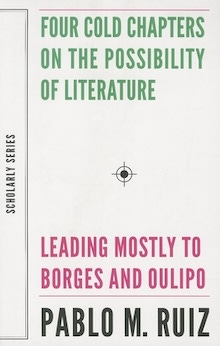
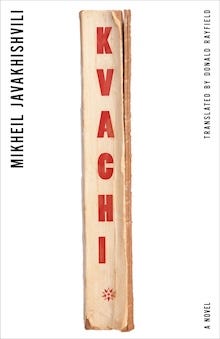
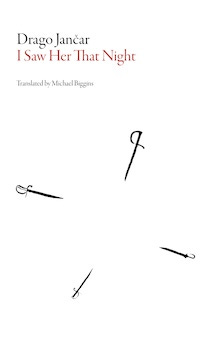
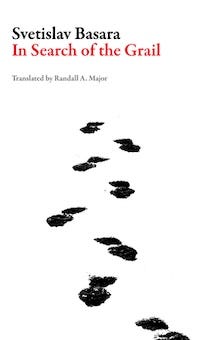
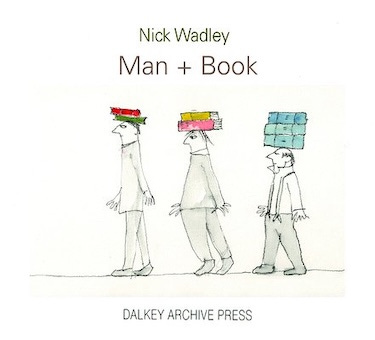
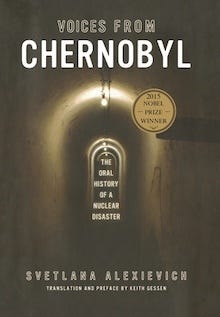

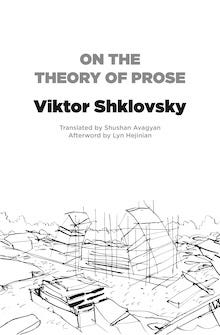

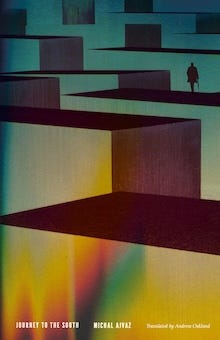
For what it’s worth I’ll be reviewing The Fake Muse for Locus Magazine (the March issue). Haven’t actually read it yet, will be doing so in the next couple of days. Very much looking forward to it.
Oh, and this whole series has been extraordinary. I might have bought a few books. (Not via the affiliate link because Australia).
"until the universe expands to the point that its density reaches an infinite value"
been loving reading your stuff from beginning to end overnight, but is anyone else bothered by this scientific misadventure? the future might indeed be different than we once expected, but i'm pretty confident that density decreases with expansion in all plausible futures.